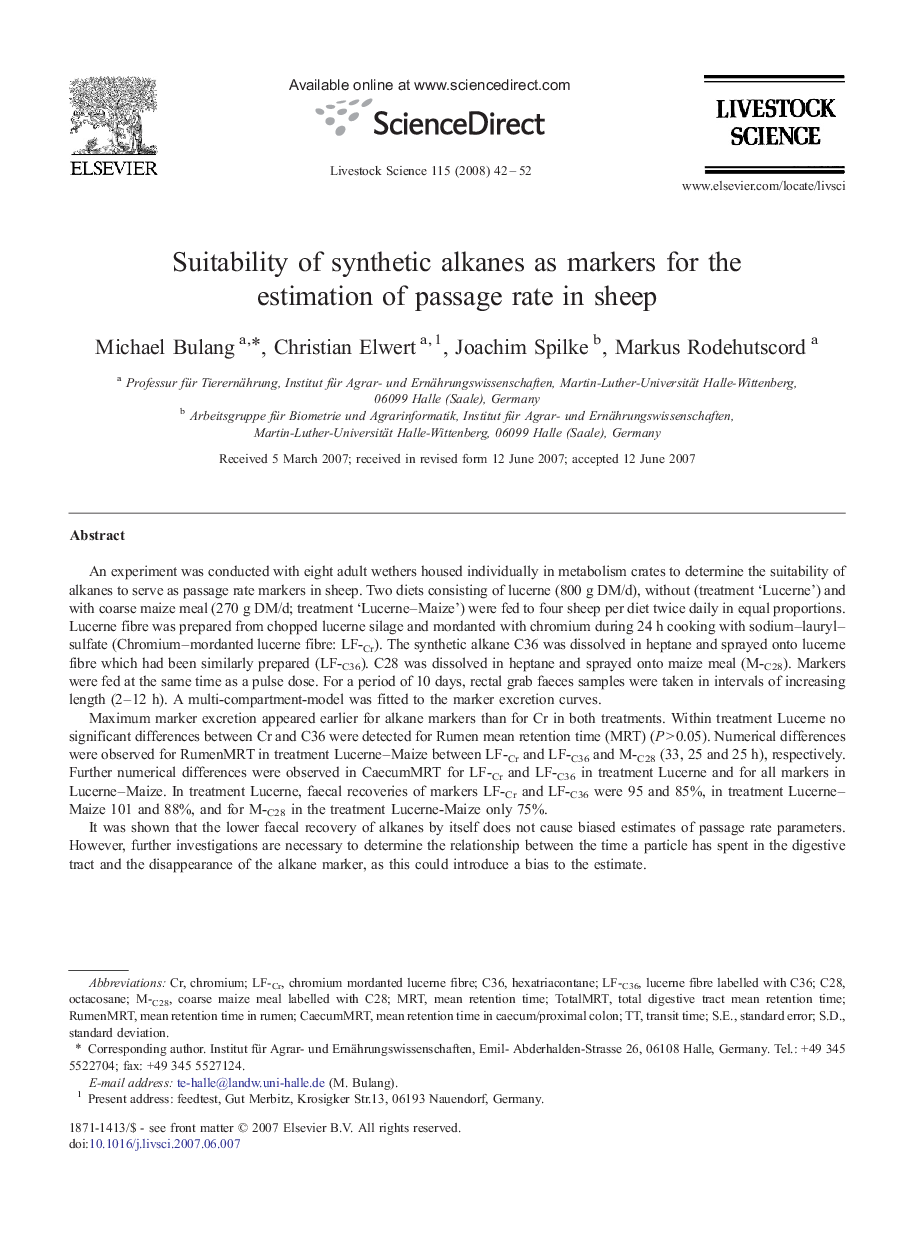| کد مقاله | کد نشریه | سال انتشار | مقاله انگلیسی | نسخه تمام متن |
|---|---|---|---|---|
| 2448539 | 1109553 | 2008 | 11 صفحه PDF | دانلود رایگان |

An experiment was conducted with eight adult wethers housed individually in metabolism crates to determine the suitability of alkanes to serve as passage rate markers in sheep. Two diets consisting of lucerne (800 g DM/d), without (treatment ‘Lucerne’) and with coarse maize meal (270 g DM/d; treatment ‘Lucerne–Maize’) were fed to four sheep per diet twice daily in equal proportions. Lucerne fibre was prepared from chopped lucerne silage and mordanted with chromium during 24 h cooking with sodium–lauryl–sulfate (Chromium–mordanted lucerne fibre: LF-Cr). The synthetic alkane C36 was dissolved in heptane and sprayed onto lucerne fibre which had been similarly prepared (LF-C36). C28 was dissolved in heptane and sprayed onto maize meal (M-C28). Markers were fed at the same time as a pulse dose. For a period of 10 days, rectal grab faeces samples were taken in intervals of increasing length (2–12 h). A multi-compartment-model was fitted to the marker excretion curves.Maximum marker excretion appeared earlier for alkane markers than for Cr in both treatments. Within treatment Lucerne no significant differences between Cr and C36 were detected for Rumen mean retention time (MRT) (P > 0.05). Numerical differences were observed for RumenMRT in treatment Lucerne–Maize between LF-Cr and LF-C36 and M-C28 (33, 25 and 25 h), respectively. Further numerical differences were observed in CaecumMRT for LF-Cr and LF-C36 in treatment Lucerne and for all markers in Lucerne–Maize. In treatment Lucerne, faecal recoveries of markers LF-Cr and LF-C36 were 95 and 85%, in treatment Lucerne–Maize 101 and 88%, and for M-C28 in the treatment Lucerne-Maize only 75%.It was shown that the lower faecal recovery of alkanes by itself does not cause biased estimates of passage rate parameters. However, further investigations are necessary to determine the relationship between the time a particle has spent in the digestive tract and the disappearance of the alkane marker, as this could introduce a bias to the estimate.The major shortcoming of alkanes as passage rate markers seemed to be migration between solid and liquid phases of the digesta. This problem could be overcome by new labelling procedures or the use of 13C-labelled native alkanes.
Journal: Livestock Science - Volume 115, Issue 1, May 2008, Pages 42–52